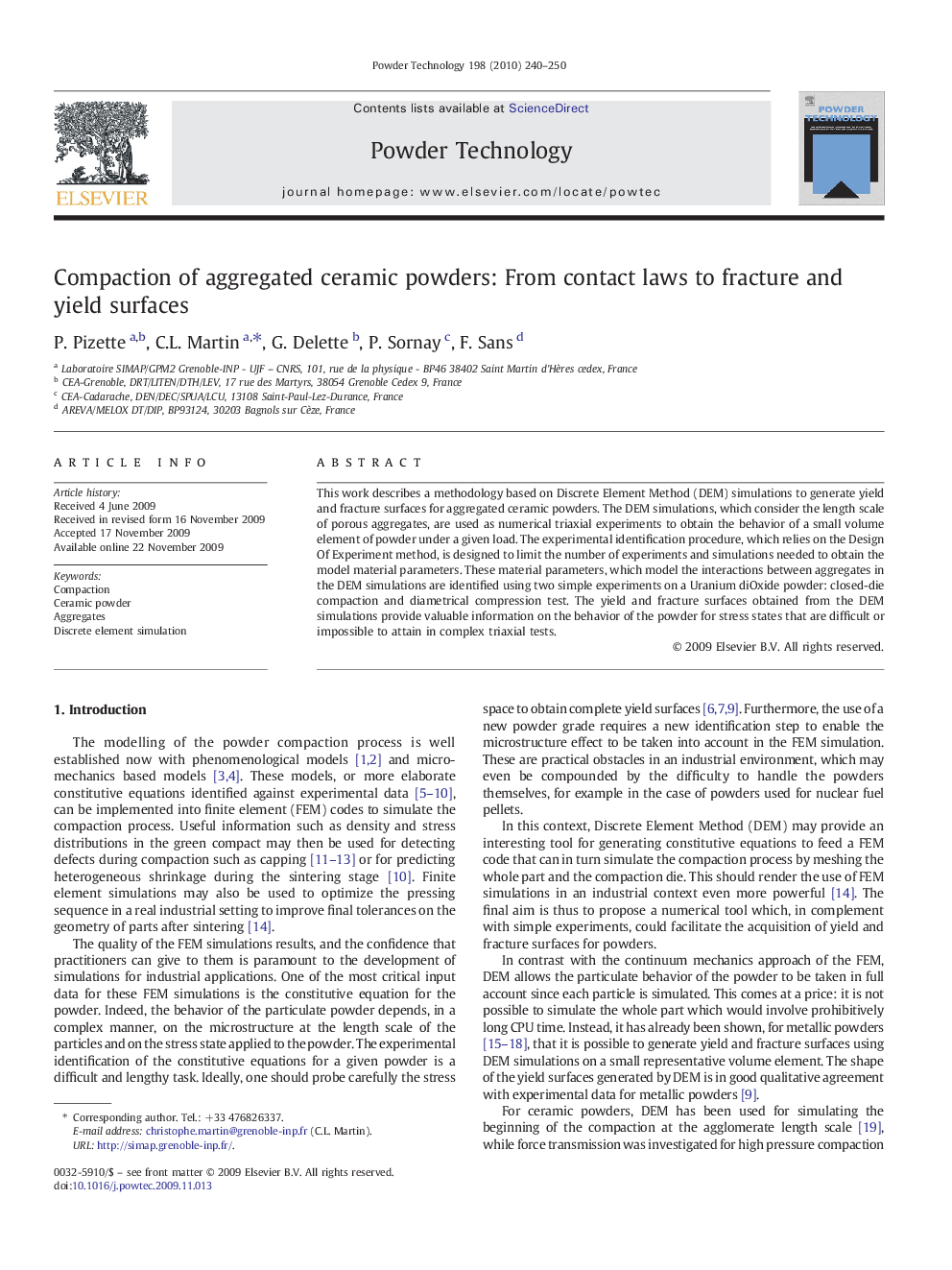| Article ID | Journal | Published Year | Pages | File Type |
|---|---|---|---|---|
| 237971 | Powder Technology | 2010 | 11 Pages |
This work describes a methodology based on Discrete Element Method (DEM) simulations to generate yield and fracture surfaces for aggregated ceramic powders. The DEM simulations, which consider the length scale of porous aggregates, are used as numerical triaxial experiments to obtain the behavior of a small volume element of powder under a given load. The experimental identification procedure, which relies on the Design Of Experiment method, is designed to limit the number of experiments and simulations needed to obtain the model material parameters. These material parameters, which model the interactions between aggregates in the DEM simulations are identified using two simple experiments on a Uranium diOxide powder: closed-die compaction and diametrical compression test. The yield and fracture surfaces obtained from the DEM simulations provide valuable information on the behavior of the powder for stress states that are difficult or impossible to attain in complex triaxial tests.
Graphical AbstractWe use discrete element method simulations on aggregated ceramic powders to generate yield and fracture surfaces in the stress plane (pressure, shear). Starting from contact laws at the length scale of aggregates, we load triaxially the numerical macroscopic sample to capture its fracture or its plastic yield.Figure optionsDownload full-size imageDownload as PowerPoint slide
